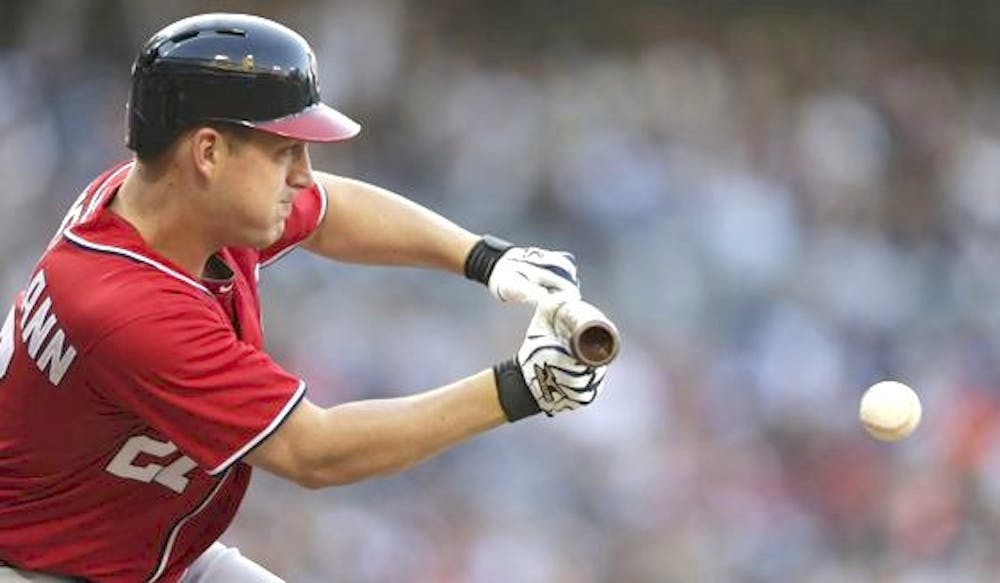By Matthew Ajaj
Staff Writer
Bunting is and has been a baseball tradition. It is not a difficult concept to grasp: stick bat out, ball hit bat. Of course, bunting aficionados are always inclined to inform listening ears of every little intricacy of the bunt. Some even call bunting an art form and will defend it to the death. After witnessing some miserable bunting in the 2015 World Series — baseball’s greatest stage, the time is nigh to discuss the futility of some of these boondoggling bunts — at least the sacrifice bunts.
One stat says it all: according to baseballprospectus.com, there is a 24.4 percent better chance of scoring a runner from first with no outs than scoring a runner from second with one out. The sacrifice bunt — a “strategic” offensive maneuver that is almost always used to move a runner from first to second while giving up an out — is thus inferior to swinging the stick.

There is also the matter of limiting one’s own team to a minimal amount of runs. According to Dan Levitt of baseballanalysts.com, a 15-year study showed that a team can expect to score .877 runs in an inning when there is a runner on first with no outs. But with a runner on second and one out (a common situation after a sac bunt), the expected runs for an inning dips to .693. By taking an out to put a runner on second, teams are destroying an opportunity to let their batters get on base and produce bigger innings. Thus, the sacrifice bunt does not just sacrifice an out: it sacrifices more runs. Games are often decided by big innings. Limiting one’s team to just a one-run inning — if they can even get that one run — destroys much of the potential for higher run output and prevents a team from breaking the game open.
The sac bunt is also damaging to the mental health of a team. Baseball is an extremely cerebral sport in which success depends on individual players’ mentalities, as well as the collective team mindset. That being said, no player goes up to the plate with the aspiration to sacrifice bunt — hitters want to hit! Hits lead to confidence, which leads to getting hot, which then leads to winning streaks. In squeaking out one run every other inning or so, players are denied the opportunity to find a rhythm.
Even more discouraging, the usage of the sac bunt seems to be most prevalent in high school and college play, where players’ psyches are even more vulnerable and volatile. In these leagues, batting averages are much higher than those in pro ball, so having little Johnny lay one down is an even more absurd tactic. Given that these kids only get to play a few dozen games a season, sacrifice bunts not only limit run-scoring but also negate the opportunity for experience-building and confidence-boosting.

Despite these incriminating statistics and psychological ramifications, bunting still does have a place in today’s game when utilized correctly. Bunting for a hit can catch sleeping defenses off-guard, resulting in an easy hit if executed properly. Also, with the prominence of excessive shifting on lefties in the big leagues, a bunt to the left side of the diamond will nearly always go for a hit. Even the sacrifice bunt still has a niche use for those pitchers that barely know how to grip a bat but need to move a runner over.
Nonetheless, in nearly any situation, the implementation of the sacrifice bunt is statistically illogical and an incriminating example of over-coaching. MLB managers and — perhaps more importantly — high school and college coaches need to step out of the dead-ball era and accept the stats. Let the hitters hit or have the runners steal — enough with the sacrifice bunt.







